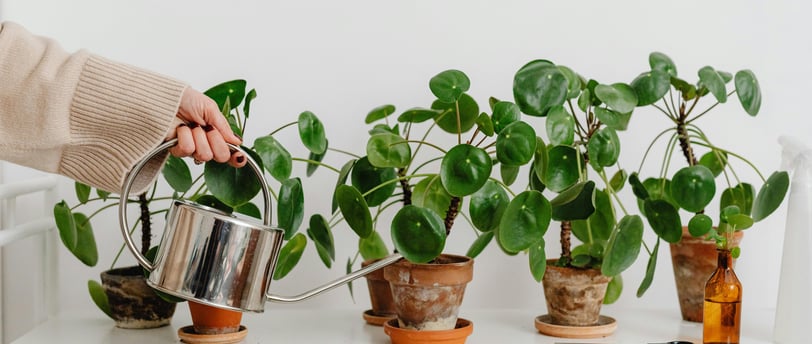Why Some Plants Need More Water and How Overwatering Can Kill Them
Understanding your plant’s watering needs is one of the most important things you can do to keep your indoor plants healthy. By knowing why some plants need more water and how overwatering can harm them, you can help your plants thrive.
BeginnerPlants
10/30/20242 min read


Watering plants may seem straightforward, but understanding why different plants need varying amounts of water is key to keeping them healthy. Some plants thrive with frequent watering, while others prefer dry spells. Knowing how much and when to water can be the difference between a thriving plant and one that’s struggling.
Why Some Plants Need More Water
Plants have different water needs based on their natural environment and structure:
• Tropical Plants: Plants like ferns and peace lilies are used to humid, rainy environments. They thrive in consistently moist soil because, in the wild, they’re used to regular rain and high humidity.
• Succulents and Desert Plants: Plants like cacti and aloe vera come from dry, arid climates. They’ve adapted to store water in their leaves, stems, or roots and can go long periods without it.
• Leaf Size and Thickness: Plants with large, thin leaves (like ferns) often lose more water through evaporation and need more frequent watering. In contrast, plants with thick leaves (like snake plants) lose less water and need less frequent watering.
Why Overwatering Can Kill Plants
Overwatering is one of the most common mistakes for indoor gardeners. Here’s why it can be so harmful:
• Root Rot: When soil is constantly wet, plant roots can’t get the oxygen they need. Roots need both water and air to survive, and soggy conditions can suffocate them, leading to root rot—a condition where roots turn brown and mushy, eventually killing the plant.
• Fungal Growth: Excess moisture creates the perfect environment for harmful fungi to grow. This can cause diseases that weaken or kill the plant.
• Weakened Roots: When roots are always wet, they become weak and fragile. This prevents the plant from absorbing nutrients properly, leading to yellowing leaves and stunted growth.
Watering Best Practices
To avoid overwatering and keep your plants healthy, here are a few watering tips:
1. Check the Soil: Before watering, check if the soil is dry by sticking your finger about an inch into the soil. If it’s still moist, wait a few days before checking again.
2. Know Your Plant’s Needs: Research your plant’s natural environment. Tropical plants generally need more water, while succulents and desert plants thrive with less.
3. Use Pots with Drainage Holes: Always use pots with drainage holes to allow excess water to escape. This prevents water from pooling at the bottom and soaking the roots.
4. Water in the Morning: Watering in the morning allows the plant to use the water during the day when it’s photosynthesizing. Watering at night can lead to water sitting in the soil too long, promoting fungal growth.
5. Adjust for the Season: Plants need more water in the growing season (spring and summer) and less in the dormant season (fall and winter).
6. Less is More: It’s better to underwater than to overwater. Many plants are surprisingly resilient and can recover from being too dry, but overwatering can cause irreversible damage.
BeginnerPlants
Your guide to indoor and outdoor plant care.
© 2024. All rights reserved.
